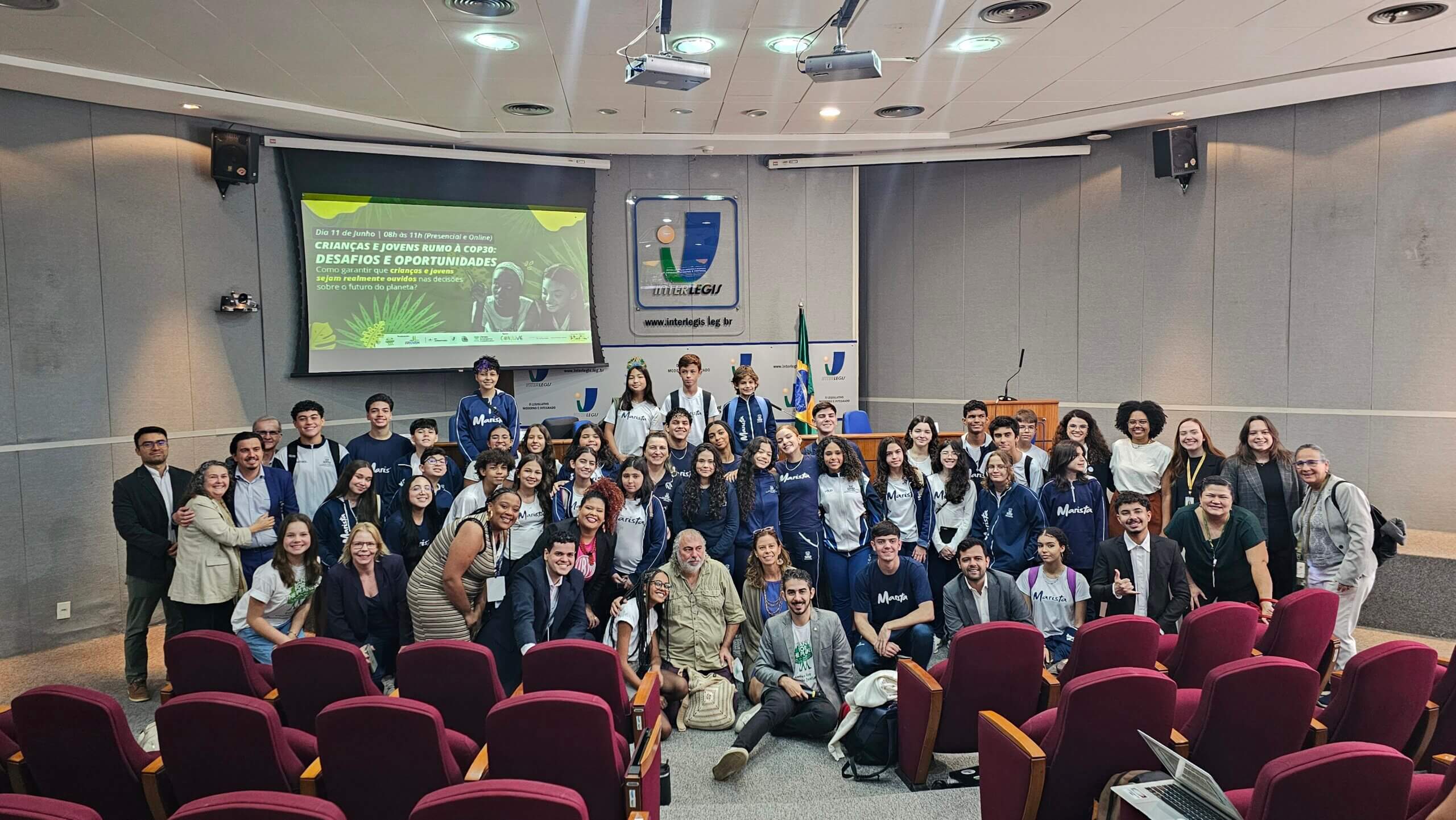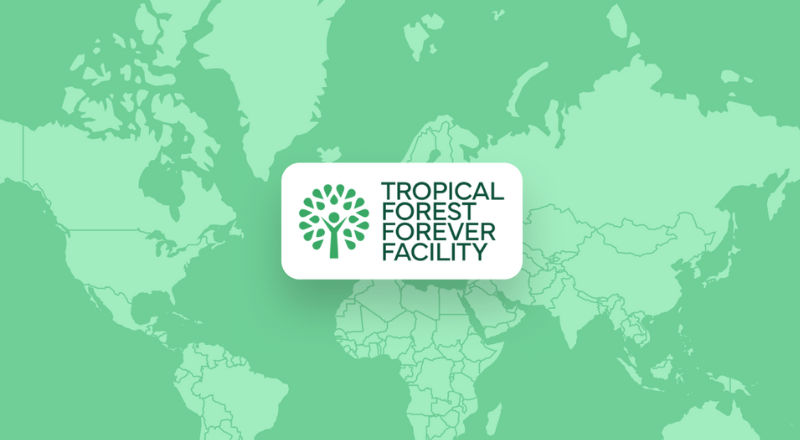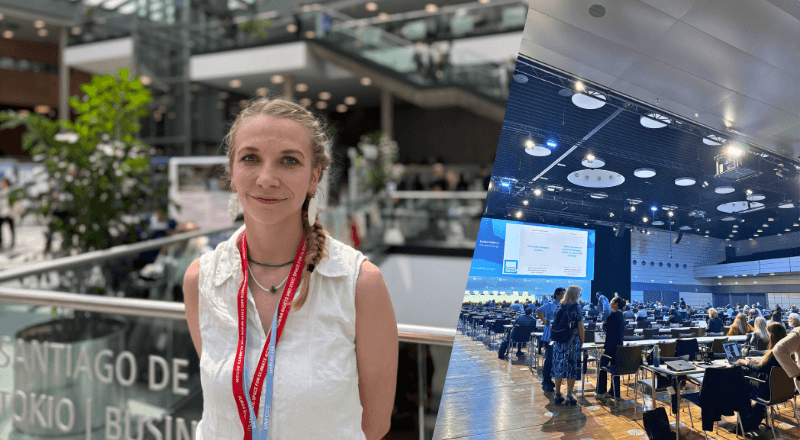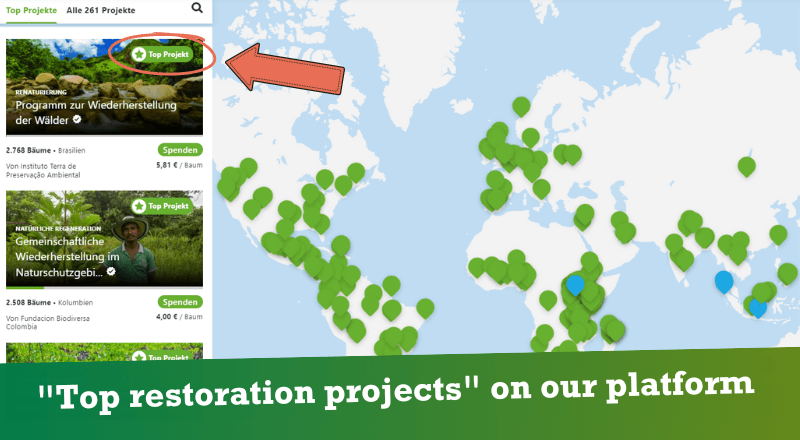
“Top restoration projects” now visible on the Plant-for-the-Planet platform
“One mosquito can do nothing against a rhino,” our founder Felix Finkbeiner once said during a speech at the United Nations. “But a thousand mosquitos can change its direction.” Plant-for-the-Planet has therefore united more than 200 projects under its umbrella (www.pp.eco) that protect and restore ecosystems on our planet – because only together can we tackle the climate crisis.
But it is also clear that restoring ecosystems means much more than simply planting trees. We have therefore developed guidelines based on scientific standards to review restoration projects that want to become part of our platform. Plant-for-the-Planet controls these with a two-step review process: with a so-called “Off-Site Review” before a project is listed on the platform and an “On-Site Review” afterwards. The “Off-Site Review” consists of a self-disclosure of the organization and an additional questionnaire to clarify, among other things, its non-profit status and to disclose the annual and financial reports. Satellite data is also evaluated and project tree species are reviewed.
The “On-Site Review” represents on-site visits by Plant-for-the-Planet experts. Data is recorded, questions are asked and the results are compared with our standards. Not all projects have gone through this yet, as they are located all over the world and we would like to use transport routes for this purpose sensibly.
After the “On-Site Review”, our independent 5-member “Restoration Project Review Board” decides on the continuation of the restoration projects on our platform. Part of this board is Stuart Pimm, Professor of Conservation Ecology at Duke University and one of the world’s leading experts on species extinction.

The review standards take into account biological, social and financial aspects and are based on scientific and international standards (SER, IUCN, UN, FAO). All requirements have been published by Plant-for-the-Planet.
To be listed on the Plant-for-the-Planet platform, restoration projects must meet at least 27 of 31 main standards. To qualify as a top project, organizations must meet at least another 12 of 19 of the “top standards”.
Top standards include planting only native tree species (excluding agroforestry projects), monitoring all donated trees (e.g., via TreeMapper), or protecting trees for at least 50 years. Other top social standards include involving the local community in the decision-making process and having at least 60 percent of employees and 30 percent of management positions staffed with local people. All top projects including the evaluation report of all projects that passed the process can be viewed on our platform. In this way, Plant-for-the-Planet guarantees a high level of transparency regarding restoration projects.
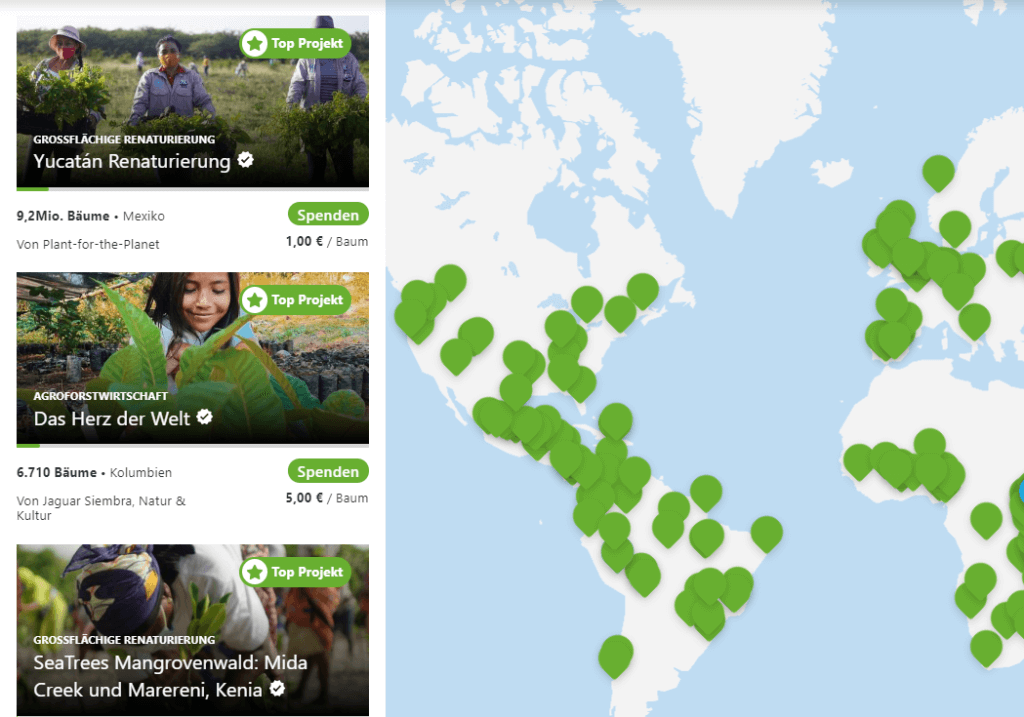

Review of our own restoration: Yucatán Restoration is a top project, but there is also room for improvement
Our own restoration project in Yucatán is now also a “top project”. Since we could not audit our own project ourselves, we assigned Dr. Luisa Fernanda Pinzò Pérez from the Autonomous University of Mexico to audit it. The project met 13 of the 19 top criteria and 29 of the 31 standard criteria. According to the study, there is room for improvement in the involvement of the local population in decision-making processes and in the filling of management positions.
At this point, we can promise: We are working on it. And we have already done a lot: For example, the foundation offers jobs as rangers to as many local people as possible – so that they can live from forest and climate protection instead of logging.

